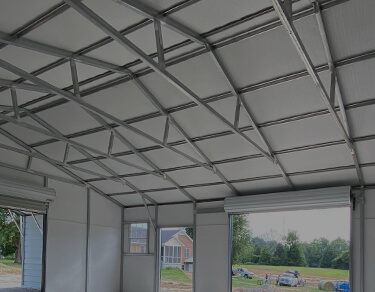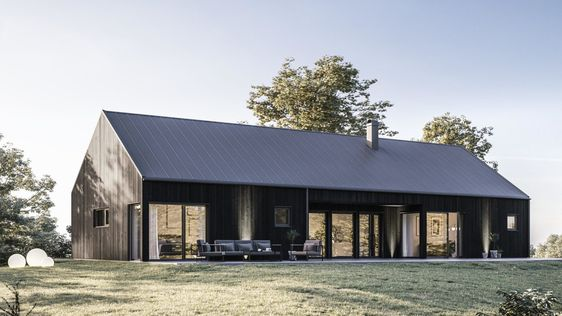
Shed Relocation Made Easy: Everything You Need to Know

Shifting a shed: This may seem almost impossible, but in reality, it can be done if the plan, tools, and techniques are adequately prepared and well-implemented. Moving a Metal shed across your garden or even to a different garden can, in fact, save plenty of time, effort, and complaints if you know how to do it. This guide will cover every step, from planning for your shed move to setting it up once you’re done.
Signs That It’s Time to Move Your Shed
Before we move on to the “how,” let’s discuss why. There are numerous reasons you may want (or need) to relocate your shed, and the signs are frequently staring you in the face:
- Inadequate Accessibility
If your shed is difficult to access, either because of invading flora, muddy terrain, or poor design, that’s the single best indicator: it’s time for an improved location.
- Water Damage or Drainage Issues
Water pooling or moist soil on the ground next to the shed may cause irreversible damage to structures. Relocating to upper terrain with adequate drainage can shield your investment.
- Your Backyard Configuration Has Changed
Are you planning a new deck, patio, or garden? Your shed is in the way. Moving it will clear the area and enhance the overall flow of your yard.
- Ground Shifting or Uneven Base
The ground has settled if the shed appears to be leaning or the doors are sticking. Relocating it to a level, stable area can avoid further problems.
- Safety Issues
Sheds near fire pits, play areas, or driveways can be unsafe. A new location can protect your family and property.
Moving a shed can be necessary for several reasons, including:
Yard Reshaping – This may include rearranging the outdoor space for beautification or improved function.
Property Development—A shed is situated within a new patio, driveway, or landscaping scheme, so moving is necessary.
Selling or Buying a Home- You are moving to a new home and must relocate with your shed.
More Light or Better Drainage—The shed may have poor placement, resulting in insufficient moisture, drainage, or sunlight.
Zoning and HOA: Sometimes, you must move that shed because of what is said in the zoning and HOA.
Tools and Materials to Move a Shed
You will need tools for three stages: preparation, lifting, and transport. These tools apply to almost all sheds, regardless of their construction. However, your shed may require a tool that is not mentioned here.
LIFTING
- Floor or bottle jacks.
PREPPING
- Precise demolition tools, such as thin-blade saws and pry bars, require as little destruction as possible.
- Nails or screws.
- Furring strips or jam wood for use as a shove.
- Reciprocating saw if the shed is bolted to its current foundation.
TRANSPORTING
- Plywood sheets or planks
- Ratcheting straps
- Means of transportation
Moving a shed can be a hassle; here are some tricks to make it easier.
Method 1: Rolling on pipes/logs
- Lift the shed: Jack the shed on one side and slide wooden planks underneath.
- Position pipes or logs: These should be placed and spaced evenly under the shed.
- Push the shed in front: Roll it up onto a trailer using ramps or winch it onto a trailer with some help.
- Settle the shed in the new spot: Remove the pipes after arrival and safely lower the shed.
Method 2: Trailer Transport
- Lift and secure the shed: Jack it up so that wooden skids can be placed underneath on either side.
- Loaded onto the trailer: Roll it up onto a trailer using ramps or winch it onto a trailer with some help.
- Strap down: Secure it down with heavy-duty ratchet straps.
- Transport and unload: Carefully drive to the new locus, setting it down on ramps.
Method 3: Hire a Moving Service
If it is too big for you and you do not have the equipment, professional movers will be your best and safest option. They do it best with tools, experience, and manpower.
Location Specifics for a Shed
The location of your shed should be optimal for both longevity and functionality. Here are some of the pointers:
- Level Ground: A flat surface helps ensure the shed is constructed on stable ground, avoiding future structural problems and facilitating easy installation.
- Drainage: Property owners should identify building positions that do not face flood risks or have insufficient drainage to stop wood damage and rust development.
- Sunshine and Shade: Good sunshine is necessary for the shed, yet it should not receive intense heat from direct sunlight.
- Accessibility: You must create sufficient space around the perimeter to allow for easy maintenance of your shed.
- Near Utilities: It is best to have plumbing and electrical facilities close to the power and water source because this placement reduces installation expenses.
Also Read: 7 Reasons Why Metal Building Workshops Are Smart Options
Common Mistakes to Avoid
#1: Moving a Full Shed
Never attempt to move a shed while it is full of tools and equipment, as the additional weight poses a greater risk and complicates the actual moving process. Empty the shed first to prevent damage and smooth the moving process.
#2: Not Planning Where the New Shed Location Is
When relocating your shed, please select the most suitable location for it. Ensure it complies with zoning laws, is relatively level, and has good drainage to prevent future problems.
#3: Moving a Heavy Shed on Your Own
Sheds can be heavy; moving one yourself could hurt or damage the shed. Always get the help of your friends, family, or professionals for your own good.
#4: Removing Move Validly
Ask yourself whether it is worth the effort to move your shed, seeing that moving presents too much work. If you want more space, give your yard a little reorganization.
#5: Not Having the Right Permits
Certain areas have zoning laws that require permits for shed relocation. Always check with local authorities to verify the regulations before moving your shed.
Last but not least
Moving an RV shed properly might add space and secure your investment. By following these expert tips, you will ensure a smooth, trouble-free movement of your shed while avoiding costly mistakes. Whether you are planning to do it all by yourself or seeking the help of paid professionals, with proper planning and execution, your shed can remain safe and functional over the years. Now, enjoy your newly placed shed and maximize its potential!
delivering & installing
throughout
the united states
Bulldog’s metal barns, garages, and carports are available for delivery and installation in most of the U.S. Whether you’re a homeowner in Maine, a rancher in Texas, or a small business owner in California, you’ll get to-your-door delivery and professional installation, so your building will be sturdy and reliable for years to come.
See Service Area